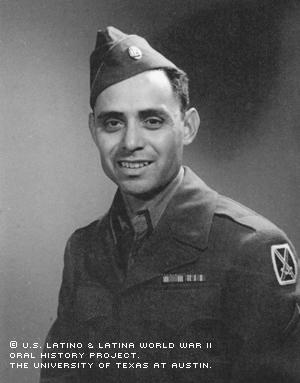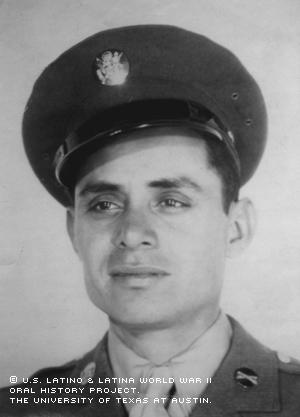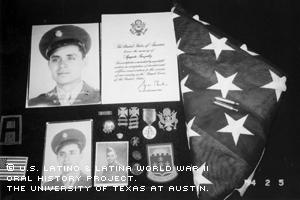


By Erika L. Martinez
When Agapito Casarez Gonzalez was drafted into the Army on June 2, 1942, he never imagined the horrors and devastation his eyes would have to see.
"The draft got me," Gonzalez said.
And even though his memory fails him at times, he vividly remembers the day he saw the bodies of Mussolini and his mistress hanging in the town square of Milan, Italy, in April of 1945.
"I saw them hanging ... him and the lady, in Milan. Like you would see anything," Gonzalez said. "We knew who they were because they told us, and Mussolini was a heavy and big man, and so was the lady."
That’s not the only image Gonzalez keeps in his mind: He also recalls the hundreds of mangled and mutilated bodies in the streets when he and his group made their way to Milan.
"A terrible thing that I saw with my very own eyes was ... an awful thing we saw was the dead bodies of the Italian people," said Gonzalez with tears on his face. "But it was and it is too much for me."
Gonzalez served with Company F’s horse-mechanized 115th Cavalry Regiment at Fort Lewis in Washington, and went through maneuvers in California at Hunter-Liggate Military Reservation. At Fort Lewis, on Jan. 1, 1944, his unit was reorganized into the 115th Cavalry Group and he was assigned to Company F of the 115th Cavalry Reconnaissance Squadron (mechanized). The squadron was relocated to Camp Polk in Louisiana, on July 4, 1944. Some time after, Gonzalez was reassigned to the 5th Army in Italy.
Before Gonzalez was sent to Italy, he was stationed at Fort Riley in Kansas, in Prescott, Ariz., and Fort Lewis in Washington. He also served on mounted cavalry as well as in infantry divisions of the U.S. Army, and was part of the ETO with the U.S. 5th Army, where he served as a machine gunner and tank crewman.
Born Dec. 6, 1910, in Kyle, Texas, 22 miles south of Austin, Gonzalez grew up in the small Texas town of Moore, about 100 miles farther southwest. There, he was raised speaking only Spanish, and, like many other Mexican American kids in his town, didn't have the opportunity to further his education.
Within a couple of years of school, he had no option but to leave Moore Elementary School to go help his father, José Mari¬a Gonzalez, to work in the fields.
"I'm ashamed to say it, but I only got to the second grade, why am I going to lie to you?" said Gonzalez with a laugh. "I had nothing of schooling, right away they put me to work. You know how hard it used to be back in the days ... that was the only way of surviving ... school wasn't worth it."
Even though his memories of his childhood are vague, Gonzalez still recalls his mother, Tomasita Casarez Gonzalez, who stayed home taking care of her 10 children. He says she died of stomach cancer when he was already an adult, and all he remembers is she used to work very hard; the whole family worked as migrant laborers.
Later, Gonzalez moved to San Antonio, Texas, where he met Hermila Estevez, who was working as a seamstress at a local clothing shop. Estevez and Gonzalez were married Jan. 3, 1938.
The couple had six children, and even though they didn't begin learning English until they started elementary school, Gonzalez made sure his kids got a better education than he did: His oldest son, Pedro, who was born while Gonzalez was in Italy, works in the air-conditioning industry; Raul works making metal sheets; and, Luis, who graduated from the University of Texas at Austin, works as a special weapons supervisor and protection manager. Gonzalez’s daughter, Elva, works as a clerk; Tomasita is a teacher; and Hermelinda is a technician.
Gonzalez has 20 grandchildren.
When he came back from the war in 1945, he began working as a laborer, making metal parts for the Southern Prison Co., from which he later retired.
For his service, he earned a WWII Victory Medal, Honorable Service Pin, Marksmanship Pin and a Rifle Range Sharpshooter Pin.
Gonzalez, however, is simply grateful to have returned from the conflict.
"The war was over ... everything passed and I came back all right," said Gonzalez with a sigh and smile on his face.
Mr. Gonzalez was interviewed in San Antonio, Texas, on April 6, 2002, by Mary L. Nieves.

